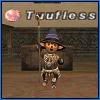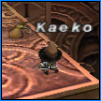Ok, this is going to be an endeavor into the unknown. As a little back ground let me give you my educational history in mathematics. In high school, I took Calculus AB, but that is a bit of a misrepresentation, because I got a 1 on the AP exam. My writing skills obviously surpassed my mathematical skills and as such I put some serious consideration into the idea of writing an essay as to why they should not give me a 1 on the AP exam. It probably would have been time better spent over the constant scratching and erasing. But even considering this, in college I attempted Calculus again, but I had learned my lesson from high school and dropped it after the second class. Why not the first, you ask? Because in the first the professor only took attendance and handed out the syllabus which I stared at blankly and deluded myself for two more days before walking out of class the second day probably understanding less about Calculus than when I had gone in. I then proceeded to realize that since math was barely a requirement for my degree, I could aim just a bit lower for my achievements on that side of the curriculum. I ended up in a class where the most complex problem involved drawing pretty lines through points to get efficient paths. I believe I had done equivalent work in the 4th grade; Home Ec would have had more difficult fraction problems. Anyway, why do I ramble on about this? Because today's experiment in mass confusion requires some level of Calculus (or at least at least what I understand about Calculus). I am pretty sure that Calculus has something to do with curves and areas under them, and since that is essentially how damage is determined in the game, I am going to call it Calculus. The people that understand these formulas would probably call it other things, like easy and simple and you-have-to-be-one-of-Potpressure's-clients-to-not-understand-this
-you-simple-minded-twit. What is the reason I believe I have any hope with this undertaking? Well, Calculus is just essentially just Algebra with formulas, and Algebra is essentially just regular math with letters instead of numbers, and regular math is just like playing with numbers, and playing with numbers is like playing with blocks, and I used to love playing with blocks in pre-school. So, by transitive property, I am basically Albert Einstein. >.>
Since there is no really good way to start this, might as well dive in. First, you need to understand that people far more intelligent and capable in mathematics came up with all the equations for melee damage in the game. VZX has posted all of these on his rather amazing website and also posted the information of the FFXI wiki which starts here and the rest of the links can be followed from that page. Now, lets take the first, most basic and most important equation: the normal melee attack (if you want to know another kind of attack you are going to have to wait for it, because this shit is complicated enough as it is).
Damage = Base Damage x pDIFIsn't that sweet? Damage = a bunch of words and letters all multiplied together! And don't think for a second that Base Damage means the damage that is listed on your weapon... well thats part of it but there is so much more. So lets start there, because pDIF is going to take forever for me to explain.
Base Damage is more like "Base Damage" in that it is actually a term that together has a specific meaning. In this case, it stands for another equation.
Base Damage = D + fSTR(It's actually fSTR2/2, but I will get to that later) Alright, so what does that mean? Well, we can't figure out what the equation means until we start defining what those letters actually mean. Lets start with D because that is the easiest. D is the Weapon Base Damage or in other words the listed damage of the weapon. Pretty easy, right? Well that is where the easiness ends, and the ZOMG-my-brain-is-melting starts.
I am going to start using an example at this point because if I do not then a lot of this is going to turn into an esoteric number crunch and it might be too abstract to think of the practical applications of these formulas. So for our example, lets start with a rather sexy player, and lets make him a Samurai. Like any good non-relic-having Samurai, our hero is using a Hagun which has a D of 75. This sexy Samurai is going to need a monster to test out these forumlas. For our example, lets make our test subject everyone's favorite: Greater Colibri.
 For the rest of the equation I will be using statistics that are constant for all Greater Colibri of the same level, but remember that levels of mobs vary and I am not trying to create an iron law for how much damage you should be doing, rather I am trying to figure out how these equations work and how I can make them useful for me.
For the rest of the equation I will be using statistics that are constant for all Greater Colibri of the same level, but remember that levels of mobs vary and I am not trying to create an iron law for how much damage you should be doing, rather I am trying to figure out how these equations work and how I can make them useful for me.Currently we know what D is and thats it. So lets move onto the next part of the equation: fSTR. fSTR is a function, which basically means that it is a formula that you can plug numbers into and it will spit you out a new number in return. This is where some of the variation begins; the exact numbers for part of this equation are not known or have some kind of variable determined by the game which is added into the formula probably in the form of an algorithm. That may have sounded smart, but really I have no idea why there is variation, I just know that there is and that the truly smart people have been able to approximate it. In this case fSTR is basically creating a number that will be added to D (the weapon's base damage) to create a multiplier used in the real damage equation. Basically, fSTR is modifier that takes into account the difference between your STR (in this case our sexy Samurai) and the monsters VIT (our poor unsuspecting Greater Colibri). It would be really nice if it was simply just your STR - monster VIT, but of course it is not. Before we even get to the function, let me tell you that fSTR has a cap on the low end and a cap on the high end. This is just part of the equation and it limits your maximum and minimum modification from fSTR. These limits are determined by another two new equations. The lower end is limited to:
-(Weapon Rank)and the upper end is limited to:
(Weapon Rank + 8)You probably know where this is going, we don't know what Weapon Rank is yet, so lets figure that out with, you guessed it, another equation!
floor(Weapon Damage Rating/9)Now don't be scared by "floor," it is just a word that helps you figure out what to do with any decimals in an equation. In this case, floor means that we always round down and get rid of any decimals that might appear in that equation. So now that we have an equation that we can actually plug some numbers into and get some real answers we can start moving back toward our goal of finding out the fSTR for our sexy Samurai with a Hagun.
Weapon Rank = floor(75/9) = floor(8.3~) = 8So our Weapon Rank is 8, and using this we can determine the lower and upper limit for fSTR.
Lower fSTR limit = -8With this information we are able to start talking about fSTR itself. It's kind of weird to know what the outside limits of fSTR are without knowing much about the equation itself, but we need to know it to get the proper numbers. This is where the first major variable is added into the equation, but essentially it looks like this:
and
Upper fSTR limit = (8 + 8) = 16
fSTR2 = (dSTR + N)/2dSTR is the direct difference between the attackers STR and the attackee's VIT, so that part is easy and it is also the first time that any statistics of the monster comes into play. N is a number that changes depending on the dSTR value. This is a little tricky, but it basically means that increasing your dSTR will have the effect of decreasing your N which is then factored back into dSTR. o.o; Mathematical dependencies make my mind do backflips. But the effect that it actually has is to keep your fSTR down as your dSTR increases. This is probably to keep the results reasonable and prevent damage from falling too far against mobs with very hit VIT. I am just going to give you the chart that approximates the values for fSTR because I believe this is just from empirical testing and not from any given knowledge.
| dSTR Range | fSTR2 Approximation |
| 12 or greater | (dSTR + 4) / 2 |
| 6 to 11 | (dSTR + 6) / 2 |
| 1 to 5 | (dSTR + 7) / 2 |
| -2 to 0 | (dSTR + 8) / 2 |
| -7 to -3 | (dSTR + 9) / 2 |
| -15 to -8 | (dSTR + 10) / 2 |
| -21 to -16 | (dSTR + 12) / 2 |
| -22 or less | (dSTR + 13) / 2 |
Now that we have this information we can do a whole lot more to add to the equation we have built so far, but before we do that we need to know the values for our sexy Samurai scenario. To find dSTR we will need to know the Samurai's STR and the Greater Colibri's VIT. Lets take a look at our Samurai's STR first, and since our Samurai is a sexy Samurai they have to be Elvaan, and since our Samurai is a smart Samurai they are subbing Warrior (don't even get me started on the how gimp /NIN is for XP), and since our Samurai is not a gimp Samurai they have 5 STR merits. Base STR for a SAM/WAR at 75 is 75, adding in the 5 from merits gives sexy Samurai a total of 80. Now for their TP equipment:

| Hagun | Claymore Grip | Nothing | Tiphia Sting |
| Walahra Turban | Chivalrous Chain (STR +3) | Brutal Earring | Merman's Earring |
| Haubergeon +1 (STR +6) | Dusk Gloves | Rajas Ring (STR +5) | Ulthalam's Ring |
| Amemet Mantle +1 (STR +2) | Swift Belt | Byakko's Haidate | Hachiman Sune-ate (STR +2) |
That is another 18 STR for an adjusted total of 98. Now we just need to know the stats for a Greater Colibri. Luckily some very dedicated people have done the research and have figured out the VIT of a Greater Colibri of level 81 which is 67. We are almost ready to figure out fSTR but like fSTR, dSTR also has upper and lower limits:
Lower dSTR limit = -((7 + Weapon Rank x2)x2) = -((7 + 8 x 2)x2) = -46These numbers are pretty far from any regular experience so they are more academic, but still important to know.
and
Upper dSTR limit = (14 + weapon rank x2)x2 = (14 + 8 x 2)x2) = 88
Now lets figure out fSTR! Since we know that 98 - 67 is going to be way over 12, we can figure out which equation we should use to get our approximate fSTR2. Thus:
fSTR2 = (dSTR + 4)/2 = (31 + 4)/2 = 17.5Now, remember this is fSTR2 not fSTR, so we still need to divide it again to get the real amount, which would be 8 if I am doing the rounding correctly. I am not sure if I am rounding correctly, but again since this is an approximation I believe it can be anywhere around this. I do not know if the approximation is because of rounding or if it is because of some other variable. I think that the reason the variance occurs may be caused by the fact that the number for fSTR2 can be either 17 or 18 but I could be completely wrong. LOL The important thing is that we now have an approximate fSTR number. It should be noted that because of the way the equation works (with two divisions by 2) it takes between 4 and 6 more STR to be able to increase your fSTR by 1. This is just one of those general rules that is good to keep in mind, but remember that it could be 1 STR that increases it depending on your current STR and that it may not always increase your fSTR because of the range of the approximation. Another general rule to keep in mind is that for two-handed weapons it is almost impossible to hit the cap for fSTR but it is much easier to do with a single-handed weapon so keep that in mind when you are finding your fSTR.
So now we know everything we need to get a value for Base Damage!
Base Damage = D + fSTR = 75 + ~8 = ~83and that gives us the first half of the melee damage equation, which is a multiplier on your pDIF. And that is what we are going to talk about tomorrow. This may seem complicated, but if you understand the equations, the reason they work and how they work you can use them in wonderful ways, and may even discover some thing to improve your own set up!
Tomorrow I will continue the explanation of the other half of the equation, pDIF. I will also go over how to make adjustments, and what different adjustments will do, and graph it out for everyone.
If you have any questions, please post them! It will definitely help me when going over this, and hopefully I will have a decent explanation for why there is a variable in fSTR, because that is bothering me! LOL





 #1 ~ Monk
#1 ~ Monk #2 ~ Samurai
#2 ~ Samurai #3 ~ Ninja
#3 ~ Ninja #4 ~ Dragoon
#4 ~ Dragoon Chaotic Pellucidity
Chaotic Pellucidity Teabags and KY Jelly
Teabags and KY Jelly The Bloggaru!
The Bloggaru!

3 comments:
I stopped reading at "playing with blocks."
I would read this, but my brain would melt. I know there are people who enjoy pouring over this level of detail to the game, but I am not one of them, doing even worse than Ring in mathmatics (if that is possible)
*mends the tables*
........ I am into this shit as much as Ring3 is but this where I loose myself into the void of comprehension..... when you are all done what will help people most on how str/atk is best equiped in their builds would be listing like a few general rules.
Like examples:
1) If your Monk stack as much ATK as you can because ........
2) If you are Drk/Thf don't worry about ACC in your WS-Build.
Post a Comment